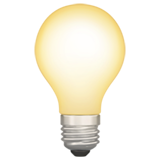At my regional tournament, our tower did not qualify for bonus despite us specifically designing it for that purpose. We asked what dimensions the circle was and the guy (he didn't know how to run towers at all) said 29 cm. We brought in somebody who knew what they were doing, and we realized that the circle had a diameter of like 32 cm! Needless to say, we got the bonus. It always helps to ask!Unome wrote:This is actually exactly what I did to draw the bonus circle on my school's test base at the beginning of the year, although my paper was printed out in four pieces and taped together, and I made sure to account for pencil line width. You can probably ask that the circle be measured, but probably nothing will come of it even if it's discovered to be inaccurate (at least that's what would happen where I am, not sure how your tournament will respond).jgrischow1 wrote:So I was watching Towers at a recent Regional. Unless I saw this wrong, a supervisor had his test base sitting there, got out a circular piece of paper (dia ~29 cm) with a ~20 x 20 cm hole in the middle, laid it on top of the test base, and traced the circle onto the test base. I thought this was odd because if the circle was exactly 29 cm, the resulting traced outline by definition had to be more than that. If he had calculated the exact width his pen mark would make and made the template small enough to result in a 29 cm circle when traced, well, then, good for him, but my kids' tower didn't fit the bonus circle even though it did the night before on our base (which I confirmed via ruler today). Again, I could have misinterpreted what he was doing, but I have two questions:
1. Is there anyway that circle could have been accurate?
2. Are the kids allowed to ask the circle to be measured?
Towers B/C
-
CrypticBuilder23
- Member

- Posts: 13
- Joined: October 17th, 2016, 8:07 pm
- Division: C
- Has thanked: 0
- Been thanked: 0
Re: Towers B/C
2015-16:
Regionals/Montgomery/State
Astro: 12 / - / -
WIDI: 12 / - / -
Bridge: 2 / 10 / 1
Wind Power: - / 1 / Cancelled
It's About Time: - / 6 / 8
2016-17:
Regionals/Princeton/State
Towers: 1 / 1 / 1
Helicopters: 4 / 6 / Cancelled
Wind Power: - / 13 / 10
Electric Vehicle: - / - / 7
Regionals/Montgomery/State
Astro: 12 / - / -
WIDI: 12 / - / -
Bridge: 2 / 10 / 1
Wind Power: - / 1 / Cancelled
It's About Time: - / 6 / 8
2016-17:
Regionals/Princeton/State
Towers: 1 / 1 / 1
Helicopters: 4 / 6 / Cancelled
Wind Power: - / 13 / 10
Electric Vehicle: - / - / 7
-
Balsa Man
- Coach

- Posts: 1318
- Joined: November 13th, 2008, 3:01 am
- Division: C
- State: CO
- Has thanked: 0
- Been thanked: 3 times
Re: Towers B/C
Sorry, but I can't figure out what you're asking.....fdf4 wrote:Sorry, I mean 36" stripsfdf4 wrote:What density should bracing be at for 24" sticks at 1/64 x 1/64 and 1/16 x 1/16?
Len Joeris
Fort Collins, CO
Fort Collins, CO
-
Tesel
- Exalted Member

- Posts: 161
- Joined: January 30th, 2016, 8:03 pm
- Division: C
- State: MI
- Has thanked: 0
- Been thanked: 1 time
Re: Towers B/C
If you'll read back in the thread a little, you'll see that 1/16x1/16 wood has problems. 1/64x1/64 wood, meanwhile, would probably be too thin to effectively work. What's instead suggested is strips (1/16 or 3/32 wide) of 1/64" sheets.fdf4 wrote:The numbers I gave were just measurements I'm most interested in using, but basically, how should I find what density of wood to use for bracing and the different lengths?
Density will depend on the thickness, but what you need is a tensile strength of about 1 kg. I believe I was recommended to use 7-8g sheets (1/64x3x36), but if you have access to pre-cut sticks you'll have to calculate density yourself.
Density isn't really the number you should be looking for, you need to find pieces of the proper tensile strength, and density is only an approximate indicator.
University of Michigan Science Olympiad Div. C Event Lead
2018 MI Mission Possible State Champions
2018 MI Mission Possible State Champions
-
Raleway
- Exalted Member

- Posts: 228
- Joined: March 12th, 2017, 7:19 pm
- Division: C
- Has thanked: 0
- Been thanked: 1 time
Re: Towers B/C
Hey guys- just wanted to ask a few questions regarding jig construction. Although 3D printing is coming to prominence, the size of the objects to be printed is limited. How do you propose a jig could 3D printed? I was thinking of making a jig similar to Tesel's but I don't know if it would work.. thoughts?
Sleep is for the week; one only needs it once a week 




God bless Len Joeris | Balsaman
God bless Len Joeris | Balsaman
-
JonB
- Coach

- Posts: 346
- Joined: March 11th, 2014, 12:00 pm
- Division: C
- State: FL
- Has thanked: 1 time
- Been thanked: 21 times
Re: Towers B/C
Raleway wrote:Hey guys- just wanted to ask a few questions regarding jig construction. Although 3D printing is coming to prominence, the size of the objects to be printed is limited. How do you propose a jig could 3D printed? I was thinking of making a jig similar to Tesel's but I don't know if it would work.. thoughts?
You can print individual pieces of a jig and put it together but by doing that (gluing the pieces together) you will lose some precision. Get creative in what you make the jig out of- 3D printing is good but you can do just as well with other materials.
-
Balsa Man
- Coach

- Posts: 1318
- Joined: November 13th, 2008, 3:01 am
- Division: C
- State: CO
- Has thanked: 0
- Been thanked: 3 times
Re: Towers B/C
Let me add a couple of things that may help and clarify.....Tesel wrote:If you'll read back in the thread a little, you'll see that 1/16x1/16 wood has problems. 1/64x1/64 wood, meanwhile, would probably be too thin to effectively work. What's instead suggested is strips (1/16 or 3/32 wide) of 1/64" sheets.fdf4 wrote:The numbers I gave were just measurements I'm most interested in using, but basically, how should I find what density of wood to use for bracing and the different lengths?
Density will depend on the thickness, but what you need is a tensile strength of about 1 kg. I believe I was recommended to use 7-8g sheets (1/64x3x36), but if you have access to pre-cut sticks you'll have to calculate density yourself.
Density isn't really the number you should be looking for, you need to find pieces of the proper tensile strength, and density is only an approximate indicator.
The strips (cut from 1/64th" thick sheet) are for the Xs in a ladders and Xs bracing system.
The density will depend on the density (i.e., weight) of the sheet, since, at whatever sheet weight, they're of the same thickness. Tensile strength is related to density, as is buckling strength. At 7-8gr/sheet, you're in the range where strips at 3/32" almost surely will have >1kg tensile, and at 1/16 probably will. Watch out for soft zones in the sheet, where the grain pattern... goes away. After you've cut a strip, pull from both ends; if you can pull at a force of a kilo or so, good to go; pre-tested. These Xs a) work in tension only, and b) have next to no buckling strength (because of the 1/64th" dimension. They act to prevent outward buckling of the legs at the braced points. Ladders at the braced points act to prevent inward buckling, coming under compression loading. Some are using 1/16th" sticks in bracing where they have to handle tensile load (Xs, Z, and V bracing configurations). The limits in this loading may come at very low density (0.2, 0.3, maybe 0.4gr/36" sticks) from shearing of a thin layer of the brace piece because of the low density.
I've been recommending 1/8" ladders, in really low density (0.7-0.8gr/36"). Some folk are apparently using 1/16" sticks for ladders (and Xs, Zs, and Vs) with success. I've described at length within the last two pages of this thread , (go back and find and digest the long post) how to test for, and apply in design, buckling strength. For pieces under compression, the longer it is, the weaker its buckling strength is, and a pretty small increase in length substantially reduces the buckling strength. So, that means that bracing pieces down toward the bottom of the tower that work in compression loading (ladders in a ladders and Xs system, Xs only, Zs, Vs) have to be stronger (in buckling strength) than they do toward the top, where they're shorter.
And last, remember that the key to design/successful performance is strength, be it tensile or buckling strength. Both are a function of density, but because we're dealing with wood, there is substantial variation around the statistical mean. You take 100 1/8" x 36" sticks weighing 1.7gr, you'll see a mean/average buckling strength around 50gr (single finger push down testing). But a few will show a buckling strength close to 60gr, and a few down toward 40gr.
Len Joeris
Fort Collins, CO
Fort Collins, CO
Re: Towers B/C
Balsa Man, can you critique this tower design (anything you would change)?
24" length legs with 1/8 x 1/8 inch width, they differ from 1-1.1 grams in weight and have a bucking strength of 100-115.
1/16 x 3/32 inch bracing in an X, with 8 at 7.5 cm intervals.
The only "ladder" would be the connecting piece at the top is 3/32 x 3/32 inch.
The total weight is 6.8 grams, and doesn't go for the bonus. I can attach a picture tomorrow if that will help.
24" length legs with 1/8 x 1/8 inch width, they differ from 1-1.1 grams in weight and have a bucking strength of 100-115.
1/16 x 3/32 inch bracing in an X, with 8 at 7.5 cm intervals.
The only "ladder" would be the connecting piece at the top is 3/32 x 3/32 inch.
The total weight is 6.8 grams, and doesn't go for the bonus. I can attach a picture tomorrow if that will help.
Who is online
Users browsing this forum: No registered users and 9 guests

